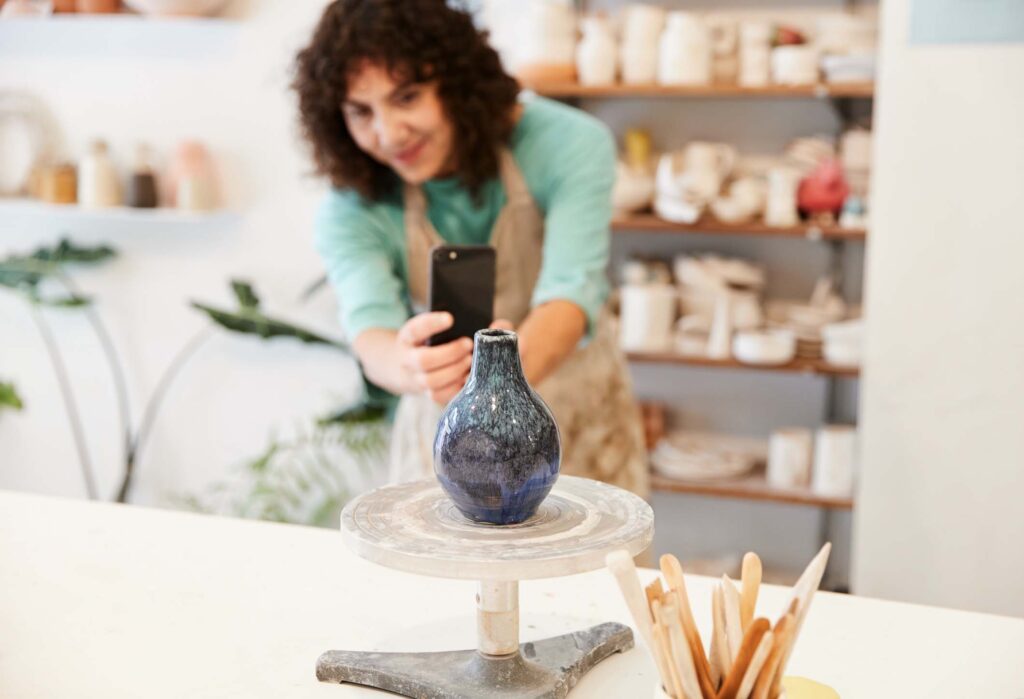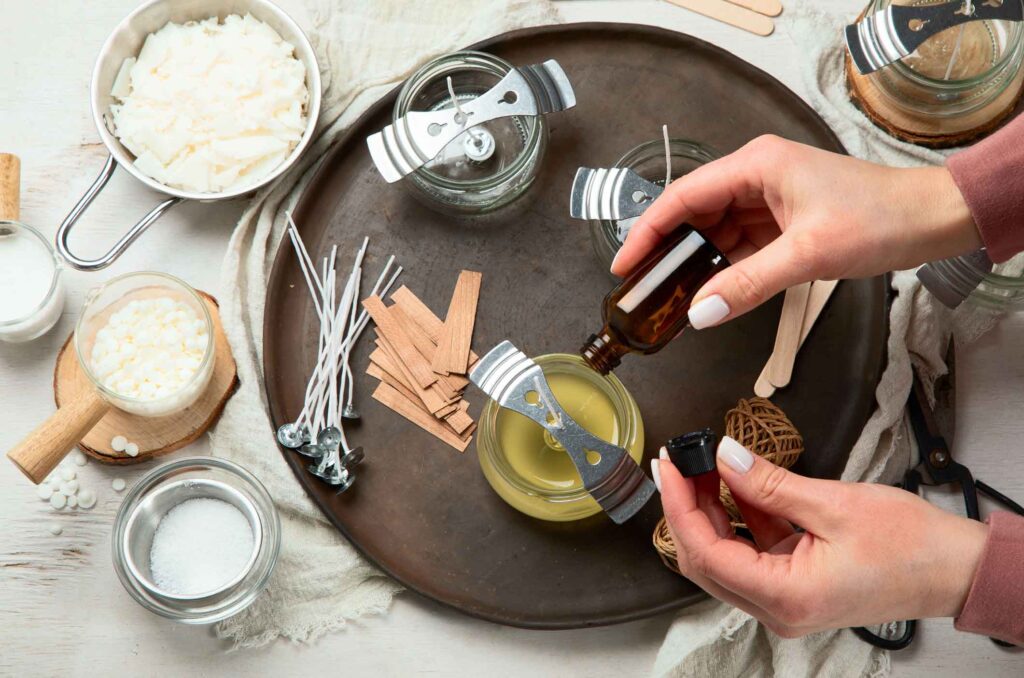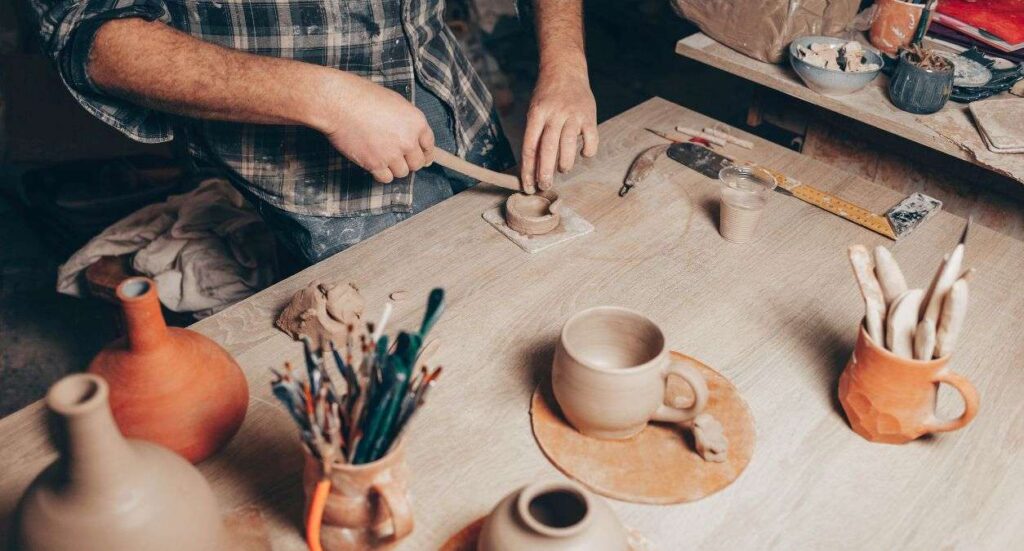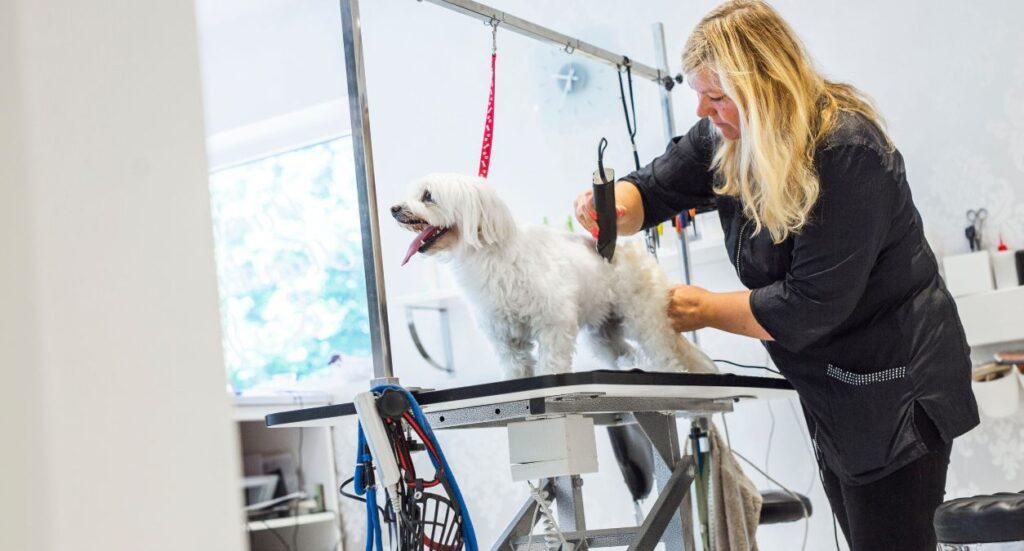Contributors
My main focus is managing the blog and product content for the Protectivity website ensuring everything aligns wi...
Whether you have a passion for knitting, woodworking, or creating unique handmade jewellery, there are many ways you can turn your passion for crafts into a thriving business. Starting a craft business requires a combination of creativity, dedication, and strategic planning. Every craft business start-up has to follow core principles that are just like those of any other small company.
Remember to keep enjoying the process, stay open to learning and continuously look to improve and grow. With the right mindset and a well-executed plan, you can turn your craft business into a fulfilling, profitable venture.
In this guide, we’ll explore business ideas, key steps and important considerations if you’re wondering how to start a craft business.

The best craft business to start
Choosing the best craft business to start depends on your skills, interests, and market demand. There are many craft businesses you can start from home and grow their potential as you improve both your craftmanship and entrepreneurial skills.
Here are some potential craft ideas to start a business with:
Handmade jewellery: Create unique and personalised jewellery pieces using various materials such as beads, metals, or gemstones.
Candle making: Make artisanal candles with different shapes, scents, and designs. You can look to target specific markets and create different ranges, such as aromatherapy accessories or decorative candles.
Customised stationery: Offer bespoke stationery, including cards, notebooks, and planners, catering to businesses or people looking for special gifts.
Handmade soap and bath products: Produce artisanal soaps, bath bombs, and skincare products using natural ingredients, appealing to consumers interested in self-care and sustainability.
Knit or crochet creations: Showcase your knitting or crochet skills by creating handmade scarves, blankets, or other cosy items.
Woodworking: Craft wooden furniture, home decor items, or personalised gifts, showcasing your woodworking skills.
Art prints and illustrations: Sell your original artwork or prints, offering a range of styles and themes to cater for different tastes.
Upcycled and recycled crafts: Create unique crafts from recycled materials, promoting sustainability and eco-conscious living.
Pottery and ceramics: Develop your own range of handmade pottery or ceramics, ranging from functional dishware to decorative art pieces.
Leather goods: Design and craft leather accessories such as wallets, belts, or custom-made items.
Fabric crafts: If you have good sewing and design skills, you could create fabric-based crafts like quilts, pillows, or clothing items.
Terrariums and miniature gardens: Make small ecosystems within glass containers, offering unique and low-maintenance decor for plant enthusiasts.
Upcycled fashion: Second-hand has never been more fashionable. Transform old clothing or fabrics into trendy and eco-friendly pieces.
Handmade pet accessories: Create unique pet products, such as custom pet beds, collars, or toys for animal lovers.
DIY craft kits: Package materials and instructions for specific crafts, providing customers with a convenient way to explore their creativity at home.

How to start an art and craft business
These recommendations are designed to help you set a solid foundation for your craft business and increase your chances of success.
Find your niche
The first and most crucial step in starting a craft business is identifying your niche. What sets your crafts apart from others in the market? Consider your interests, skills, and the potential demand for your products. Research the market to understand trends and identify any gaps that your craft business could fill. Whether it’s handmade candles, personalised stationery, or eco-friendly crafts, defining your niche will guide your product development and marketing efforts.
Create a business plan
A comprehensive business plan is essential for the success of any venture. It will help you get clear on where you want your company to go and stay on track with your key aims. Outline your business goals, target market, competition analysis, and financial projections.
Define your unique selling proposition (USP), describing what makes your crafts special and differentiates them from others in the market. A business plan serves as a roadmap for your craft business and can be a valuable tool when seeking funding or partnerships.
Follow legal requirements
Before going ahead with your craft business, take care of the legalities. Register your business with the appropriate authorities and obtain any necessary licences or permits. Consider the legal structure of your business, whether it will be a sole proprietorship, partnership, LLC, or corporation. We’ll explore this in more detail later in the article.
Protect your intellectual property by trademarking your business name or any unique designs associated with your crafts.
Decide where you’ll work
Create a dedicated workspace for your craft business. Whether it’s a corner in your home, a studio, or a workshop, having an organised and well-equipped space is crucial for efficient production.
If you’re wondering how to start a craft business from home, you can create an efficient home workspace by selecting a quiet, well-lit area. Invest in a comfortable desk and ergonomic chair to promote good posture. Organise your supplies using storage solutions, keeping essentials within reach.
Personalise the space with inspirational decor and make sure you’ll have reliable internet connectivity. You might want to purchase noise-cancelling headphones to help you focus if there’s likely to be outside noise. Establish a routine, delineating work hours to maintain a healthy work-life balance. Minimise distractions and find the place in your home with the best natural light, or work during the most well-lit hours. Prioritise comfort and functionality to enhance productivity in your home office.
Invest in quality tools and materials, and ensure that your workspace complies with safety regulations. A comfortable and inspiring environment can enhance your creativity and productivity.
Source materials
Identify reliable suppliers for the materials needed for your crafts. Research and establish relationships with vendors who offer quality supplies at reasonable prices. Consider the sustainability of your materials, as environmentally conscious products are gaining popularity. Building strong relationships with suppliers ensures a steady flow of materials for your craft business.
Price your products
Determining the right pricing strategy is essential for the success of your craft business. Research the prices of similar products in the market to ensure that your pricing is competitive. Don’t forget to factor in your desired profit margin and account for any discounts or promotions you may offer.
If you’re wondering how much it costs to start a craft business, look into the cost of materials, labour, and overhead when setting your prices. You can research the prices of your required equipment and add in anything else such as delivery, email and website platform subscriptions, software systems etc. Then you can come up with your product price.
Establish your brand identity
Creating a strong brand identity is crucial for standing out in the market. Choose a memorable and distinctive business name, design a logo that reflects your brand’s personality, and establish a consistent visual style for your crafts and marketing materials.
Your brand identity should resonate with your target audience and convey the unique value of your products. This also means communicating your brand values and mission. What is your purpose? What do you believe in and what problems are you looking to solve? What causes would you like to be aligned with? These are all important to today’s consumer market.
Build an online presence
In the digital age, an online presence is essential for reaching a wider audience. The internet may be your main source of new customers and income. Create a professional ecommerce website showcasing your crafts, providing information about your business, and allowing customers to make purchases online.
Create social media accounts and plan your posts ahead in a marketing calendar, to engage with your audience and build a community around your brand. You could also sell your crafts on popular online marketplaces to expand your reach.
Marketing and promotion
Effectively market your craft business to attract customers and generate sales. Develop a marketing strategy that includes both online and offline channels. Use social media, email marketing, and online content creation on your website to showcase your crafts and connect with your target audience.
Consider attending craft fairs, markets, and local events to promote your products in person. Run influencer marketing campaigns and collaborate with other businesses to expand your reach.
Provide exceptional customer service
Customer satisfaction is key to the success of your craft business. Provide excellent customer service by responding promptly to inquiries, addressing concerns, and ensuring timely delivery of products.
Encourage customer feedback and use it to continually improve your products and services. The better your business reputation, the more likely people are to recommend you and keep coming back.
Create finance management systems
Effective financial management is crucial for the sustainability of your craft business. Keep detailed records of your income and expenses, and use accounting software to streamline the process. Set a budget for your business and monitor your cash flow regularly.
Plan for taxes in advance, putting money aside throughout the year, and seek the advice of a financial professional if needed. Good financial management ensures the long-term success and growth of your craft business.
Plan how to scale your craft business
As your craft business grows, you can consider expansion opportunities. It’s important to be prepared for this ahead of time; it is sometimes the case that product demand soars before a business is ready to meet it. If you need help with this, consult with other business owners who have experience growing companies.
Explore new product lines, markets, or distribution channels to increase your revenue. Hire additional help if needed, and invest in marketing strategies to reach a broader audience. Continuously evaluate and adjust your business plan to adapt to changing market trends and customer preferences.

Do I need a licence to sell crafts in the UK?
It’s crucial to research and understand any specific regulations that may apply to your craft business based on its nature and location. Generally, there isn’t a specific licence required to sell crafts in the UK. However, there are some exceptions and considerations.
Local council regulations
Depending on the nature of your craft business and where you operate, your local council may have specific regulations. Some councils require businesses, including home-based ones, to obtain a licence or inform them of their activities. Check with your local council to ensure compliance with any local regulations.
Food and beverages
If your craft business involves the production and sale of food or beverages, you may need to comply with food hygiene and safety regulations. In such cases, you might need to register with the environmental health department within your local council.
Street trading
If you plan to sell your crafts in public spaces, such as at markets or on the street, you may need a street trading licence. Check with your local council for guidance.
Do I need to register my craft business with HMRC?
Yes, you do need to register your craft business with HMRC for tax purposes. Even if you earn less than the minimum income of £1,000, you’ll have to be registered. Failure to register your craft business with HMRC and comply with tax regulations can result in penalties, so it’s essential to address this aspect early on.
Here are the key areas to be aware of.
Sole trader or partnership
If you’re operating your craft business as a sole trader or in partnership with others, you need to register with HMRC. This registration is necessary for tracking your income and expenses for tax purposes.
Limited company
If your craft business is set up as a limited company, you must register it with Companies House and HMRC. This involves providing details about the company’s structure, directors, and shareholders.
VAT registration
Depending on your business’s turnover, you may need to register for Value Added Tax (VAT). If your taxable turnover exceeds the VAT threshold of £85,000, you must register for VAT.
National insurance contributions
As a self-employed business, you’ll also need to register for National Insurance contributions. This ensures that you are paying the correct amount of National Insurance based on your earnings.
Get Crafters Insurance with Protectivity
Getting the right insurance will help you to preserve your brand reputation and protect your finances, reassuring you to focus on doing the work you love.
Protectivity’s crafters insurance is designed to support you as you grow your new business. Our specialist insurance includes public liability, employers’ liability, products liability and equipment and stock cover. If you’re planning to sell your crafts at fairs, take a look at our craft fair public liability insurance here.
Find out more and get an online quote suited to your business.
Get Crafters Insurance from Protectivity
*Disclaimer – This blog has been created as general information and should not be taken as advice. Make sure you have the correct level of insurance for your requirements and always review policy documentation. Information is factually accurate at the time of publishing but may have become out of date.
Last updated by

















